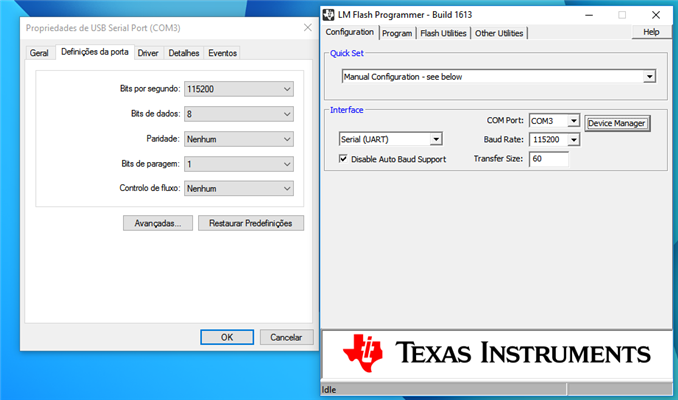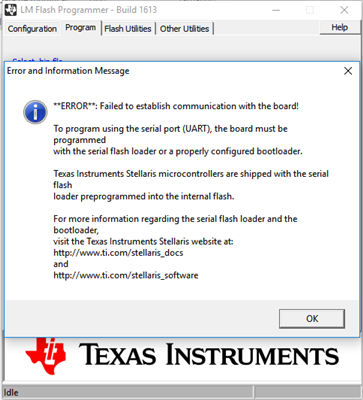Other Parts Discussed in Thread: UNIFLASH,
Tool/software: Code Composer Studio
I am new with TI microcontrollers and I am having some problems trying to build a boot loader for the uart7. I think I have correctly configured the file bl_config.h from the boot_serial example and flashed it through a JTAG.
But when I tried to upload a .bin file via LM Flash it didn't work. I also upload a .bin file via Uniflash in the starting address that I have set as APP_START_ADDRESS in the attempt to run it together with the boot loader, but it didn't work either.
What am I doing wrong? Can I use LM Flash to upload .bin files to the uart7?
I am using a Tiva TM4C129ENCPDT and the only uart ports that I have access are 5 and 7.
Best regards,
Vinícius




